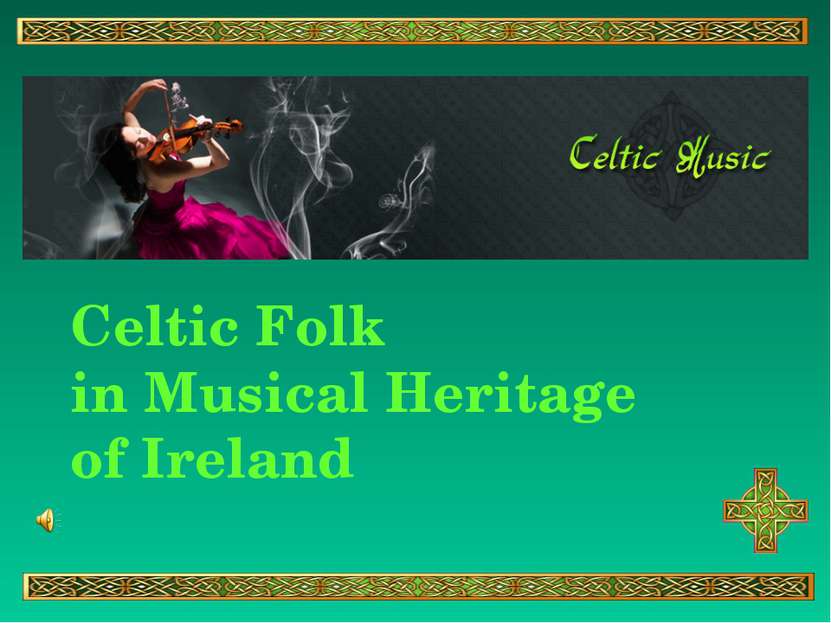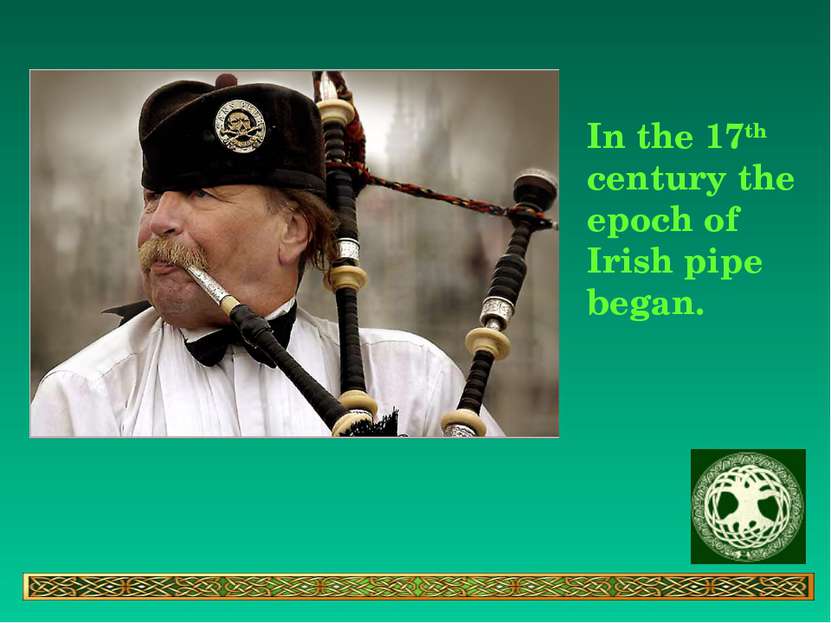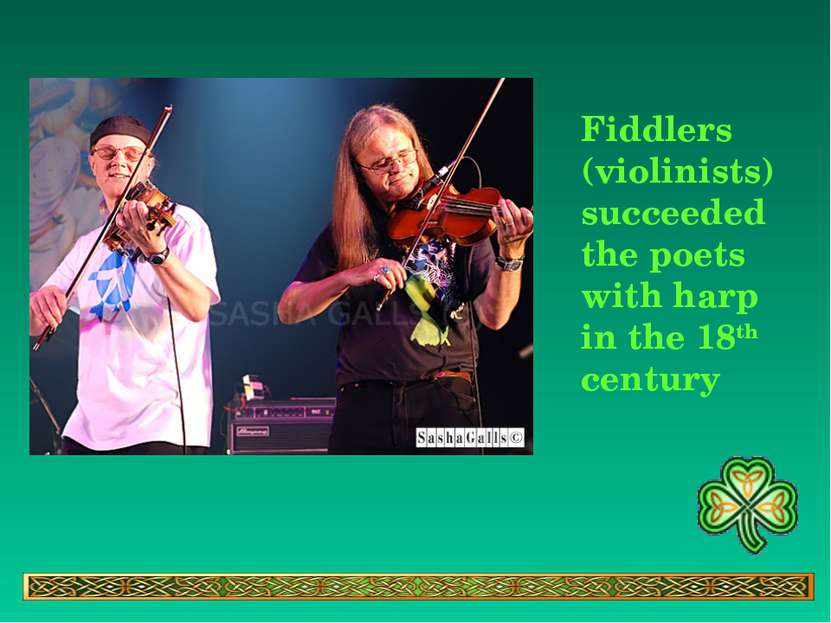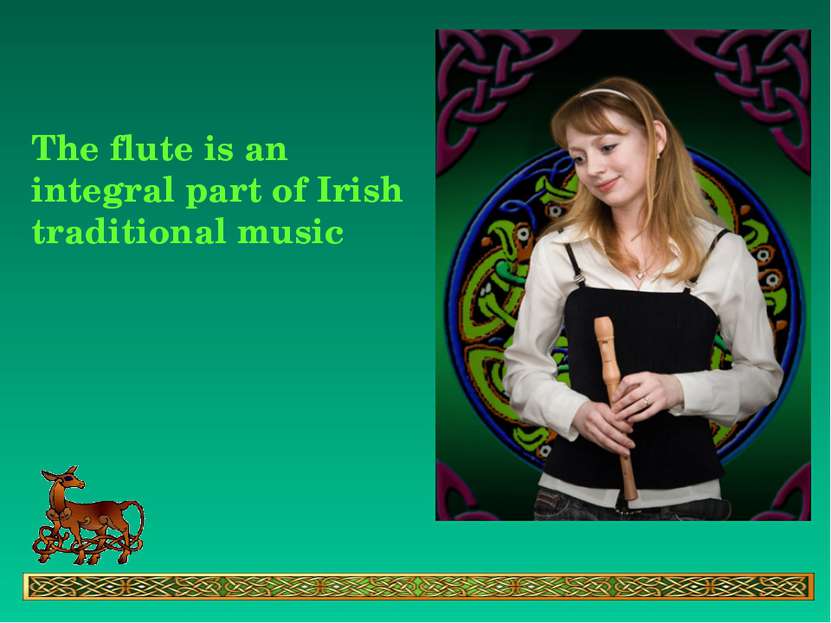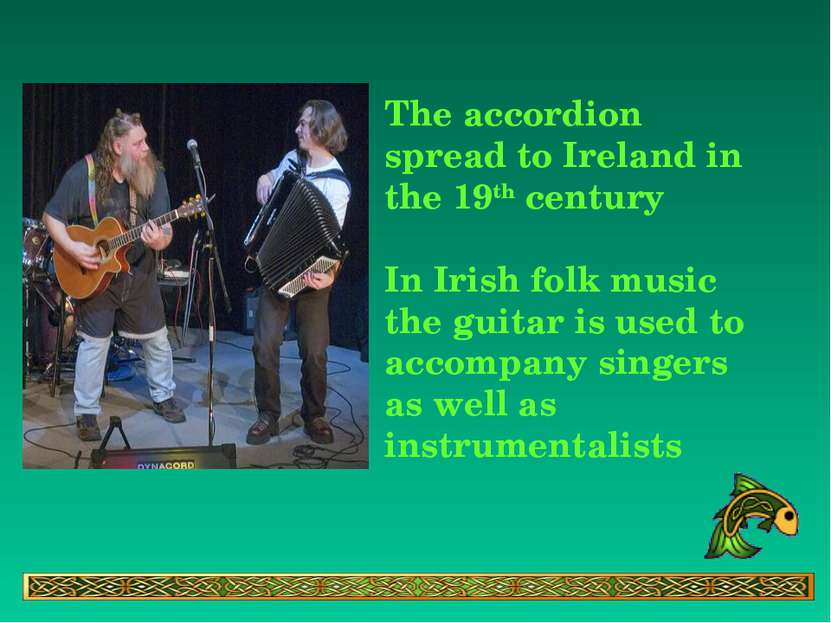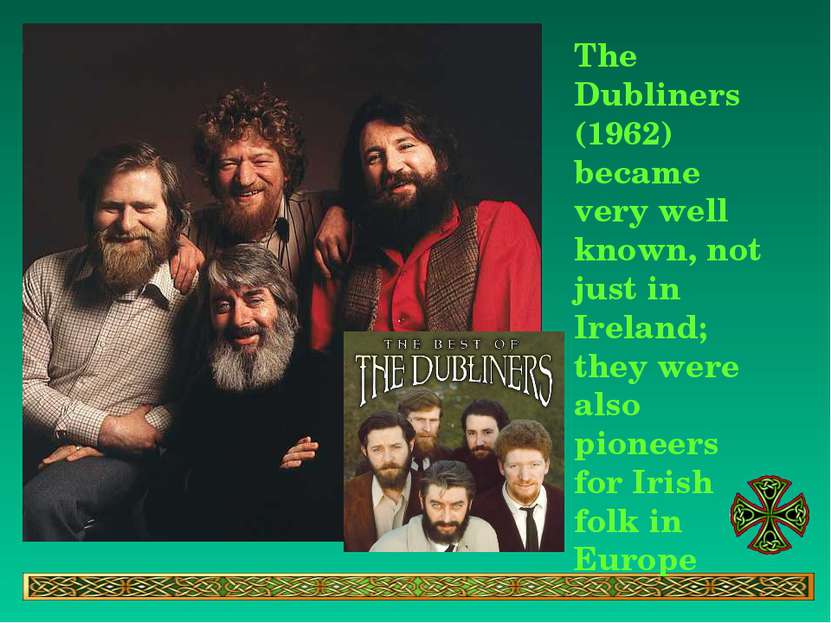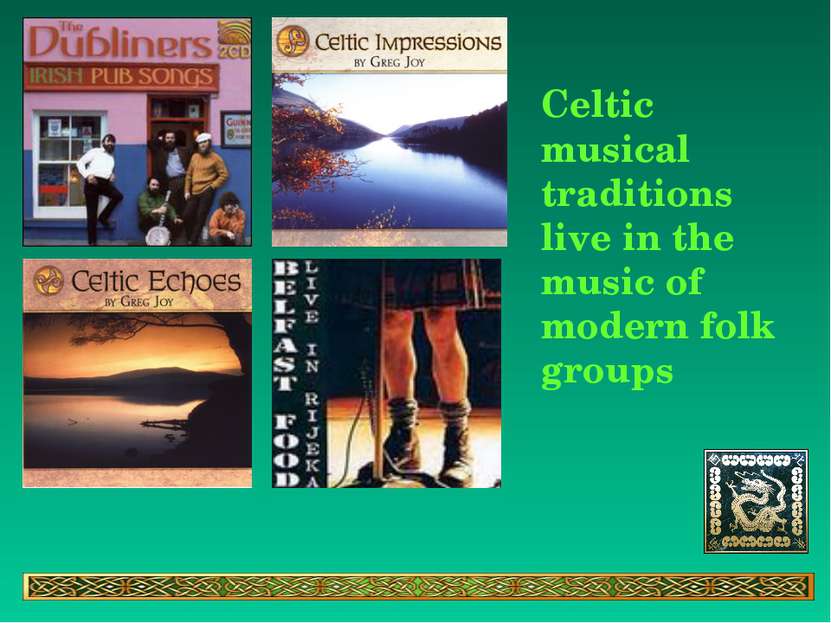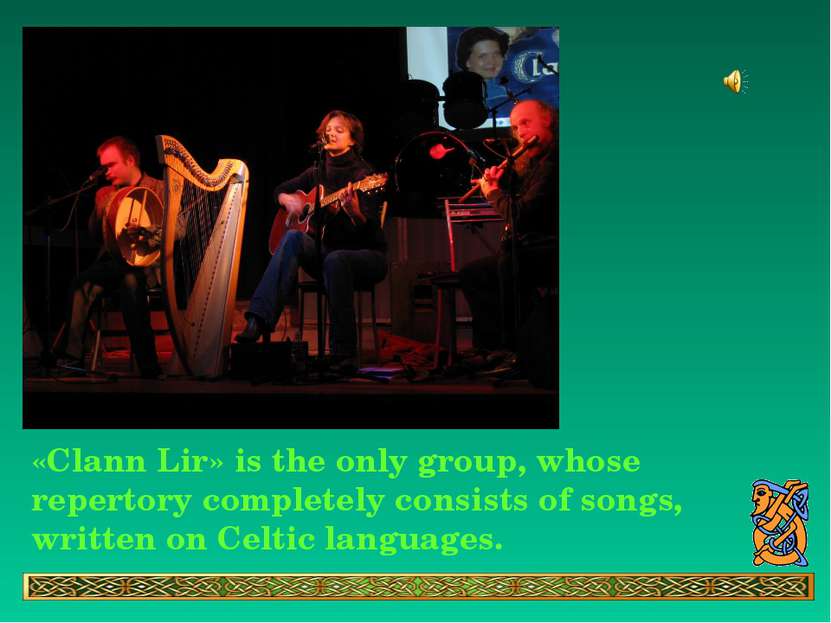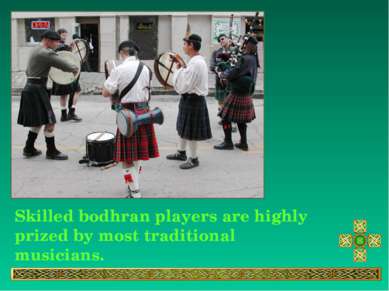X
Код презентации скопируйте его
Celtic Folk in Musical Heritage of Ireland
Скачать эту презентациюПрезентация на тему Celtic Folk in Musical Heritage of Ireland
Скачать эту презентациюCлайд 2
 The subject of my research is Celtic folk in different historical periods. The objectives of my work are: firstly - to explore the roots of Celtic folk; secondly - to traсe Celtic traditions in Irish folk music in different historical periods; thirdly - to show how Celtic music was changing in these periods; finally - to show the influence of Celtic music on modern Irish music.
The subject of my research is Celtic folk in different historical periods. The objectives of my work are: firstly - to explore the roots of Celtic folk; secondly - to traсe Celtic traditions in Irish folk music in different historical periods; thirdly - to show how Celtic music was changing in these periods; finally - to show the influence of Celtic music on modern Irish music.
Cлайд 3
 During the First Millennium BC, Celtic-speaking people occupied a large part of central Europe
During the First Millennium BC, Celtic-speaking people occupied a large part of central Europe
Cлайд 6
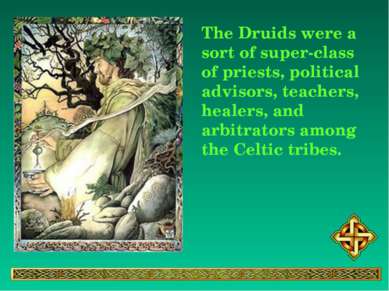 The Druids were a sort of super-class of priests, political advisors, teachers, healers, and arbitrators among the Celtic tribes.
The Druids were a sort of super-class of priests, political advisors, teachers, healers, and arbitrators among the Celtic tribes.
Cлайд 13
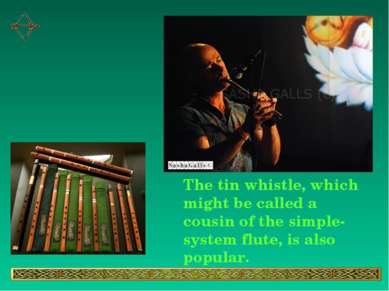 The tin whistle, which might be called a cousin of the simple-system flute, is also popular.
The tin whistle, which might be called a cousin of the simple-system flute, is also popular.
Cлайд 14
 The accordion spread to Ireland in the 19th century In Irish folk music the guitar is used to accompany singers as well as instrumentalists
The accordion spread to Ireland in the 19th century In Irish folk music the guitar is used to accompany singers as well as instrumentalists
Cлайд 16
 We foot it all the night Weaving olden dances, Mingling hands and mingling glances Till the moon has taken flight.
We foot it all the night Weaving olden dances, Mingling hands and mingling glances Till the moon has taken flight.
Cлайд 17
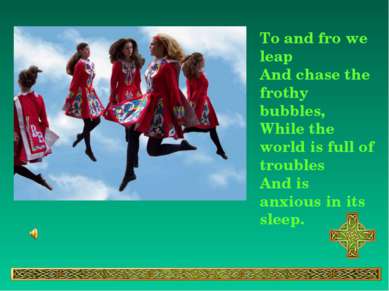 To and fro we leap And chase the frothy bubbles, While the world is full of troubles And is anxious in its sleep.
To and fro we leap And chase the frothy bubbles, While the world is full of troubles And is anxious in its sleep.
Cлайд 18
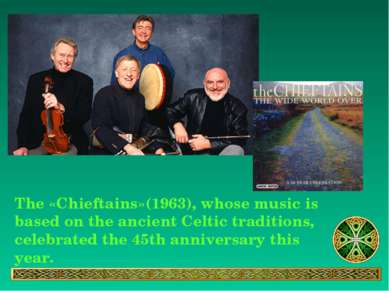 The «Chieftains»(1963), whose music is based on the ancient Celtic traditions, celebrated the 45th anniversary this year.
The «Chieftains»(1963), whose music is based on the ancient Celtic traditions, celebrated the 45th anniversary this year.
Cлайд 19
 The Dubliners (1962) became very well known, not just in Ireland; they were also pioneers for Irish folk in Europe
The Dubliners (1962) became very well known, not just in Ireland; they were also pioneers for Irish folk in Europe
Cлайд 21
 «Clann Lir» is the only group, whose repertory completely consists of songs, written on Celtic languages.
«Clann Lir» is the only group, whose repertory completely consists of songs, written on Celtic languages.
Cлайд 22
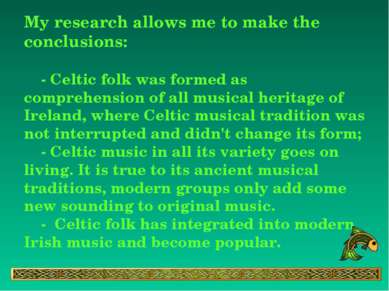 My research allows me to make the conclusions: - Celtic folk was formed as comprehension of all musical heritage of Ireland, where Celtic musical tradition was not interrupted and didn't change its form; - Celtic music in all its variety goes on living. It is true to its ancient musical traditions, modern groups only add some new sounding to original music. - Celtic folk has integrated into modern Irish music and become popular.
My research allows me to make the conclusions: - Celtic folk was formed as comprehension of all musical heritage of Ireland, where Celtic musical tradition was not interrupted and didn't change its form; - Celtic music in all its variety goes on living. It is true to its ancient musical traditions, modern groups only add some new sounding to original music. - Celtic folk has integrated into modern Irish music and become popular.

